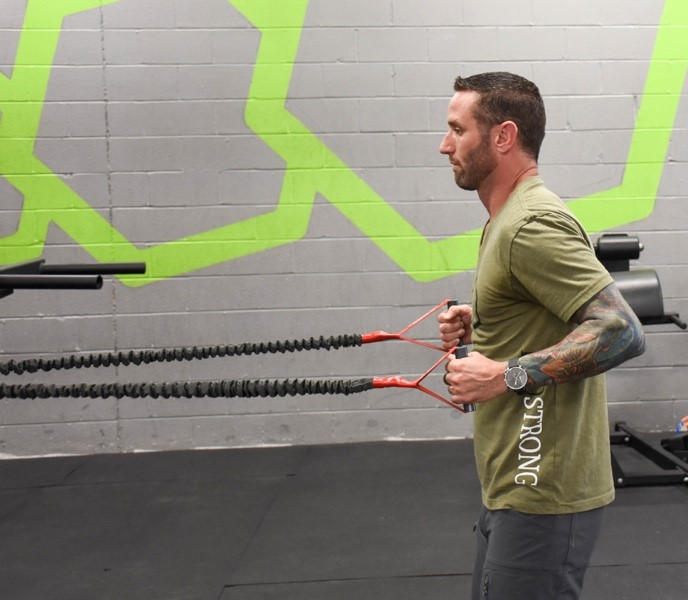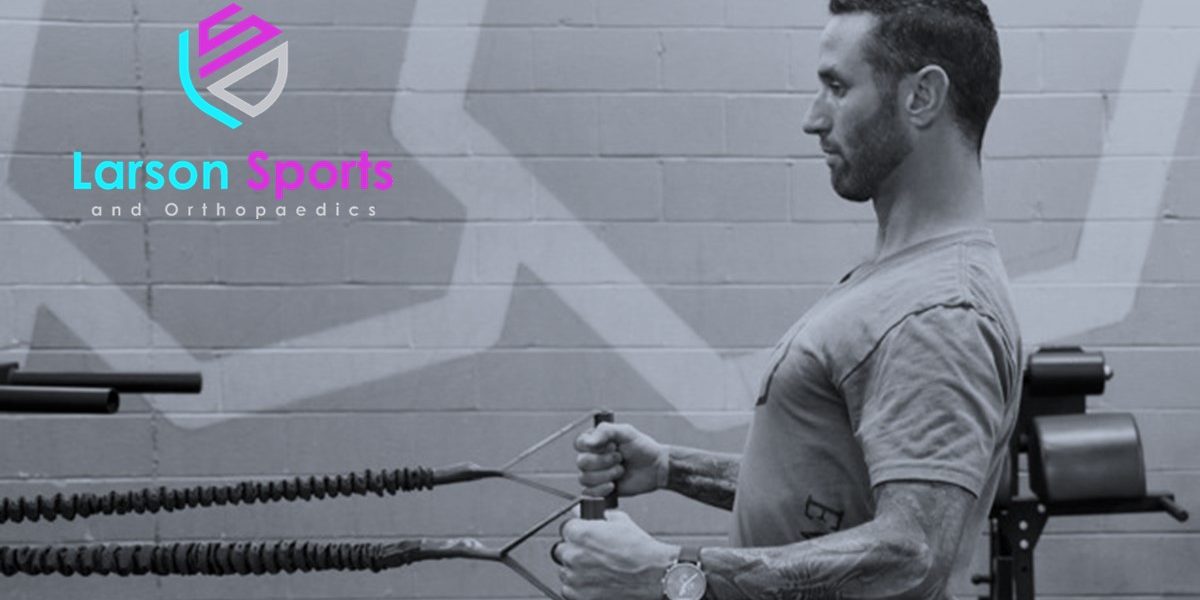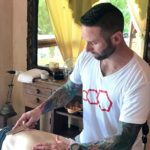Move Better, Feel Better. It’s a simple mantra but it’s one I believe in. And I’ve seen first hand how this simple idea has helped thousands of my patients. Do you have pain in your knees? Does arthritis stop you from doing simple things? Does shoulder pain keep you up at night? Well, then this article is for you!
Some of the most detrimental injuries that can happen to the human body don’t happen in a single moment of time. They only happen after years of wear and tear. I’ve treated far more patients for these types of problems than I’ve ever treated for sudden injuries in the gym. A lot of people will blame their exercise program for causing a problem when the problem has actually been there for years. But they didn’t notice it before, because they’d slowly stopped doing all of the things that made it hurt. Until that person tries to get active and healthy and exercising again. Then the chronic injury flares up and they blame the gym!
Here’s a “non-gym” example of how we often confuse cause and effect when it comes to our injuries. I had a patient years ago that swore up and down that his new zero-turn mower caused his hip pain. I had my suspicions that this wasn’t really the case, but I was willing to play along until the MRI report was in. As I’d suspected, his MRI report came back showing end-stage osteoarthritis of his hip. So, while riding the zero-turn tractor was aggravating his hip it certainly did not cause arthritis. That takes years and years of repetitive stress to develop.
About the author: Scott Dolly MS, ATC, CSCS. Scott is the owner of Evolution Human Performance and Rehabilitation in Winchester, VA. He has a Masters Degree in Athletic Training and practices movement analysis, manual therapy, and functional fitness training. He an IASTM trainer with HawkGrips, and an unabashed fitness geek.
Injuries Are Usually An Accumulation of Damage
I think the majority of people make this simple mistake, myself included. When our elbow or knee or shoulder starts hurting, we instantly begin trying to figure out “the thing” that caused it. And in most cases, there isn’t just one thing to point to. And even when there is something to point to, it’s usually not as much to blame as we think it is. Maybe there was one final straw that breaks the camel’s back, but only because of all the repetitive injuries that the tissue had already suffered before that!
A great example of this is when someone in their 40’s tears their rotator cuff throwing a football. Clearly, their rotator cuff tore when they threw the ball. But a healthy rotator cuff doesn’t just tear from a normal football throw. So why did throwing the football tear their rotator cuff that time? It tore because the rotator cuff tissue was chronically damaged so badly that it finally gave out with a minor action. But how did the tissue end up so sick that tossing a ball could tear it? To answer that question, we must look at which movements that person does with their shoulder every day. And we must look at how they are moving their shoulder during those movements.
Practice Makes Permanent, Not Perfect
Just because you are active, does not mean you are keeping your body in optimum condition. For example, a very common problem is when someone complains that walking up and down stairs hurts their knees. You would think that everyone knows how to use the stairs; we’ve been doing it since we were kids. But it’s just not true! Our bodies are lazy by nature and fall into suboptimum patterns of movement. We subconsciously focus on the efficiency of action, not on correct form and function.
After a lifetime of your body trying to find the least energy-expensive way of going upstairs, they often get into a pattern of movement that is so bad, it’s too painful to do the stairs at all anymore. The result is that many people begin to think they simply can’t walk up and down steps anymore. The crazy thing is that I can completely alleviate knee pain just by teaching a patient to go up and down stairs THE RIGHT WAY! More often than not, it is how we are performing the movements that are causing us pain and not the movements themselves.
Taking the time to learn how the joints are supposed to move and then focusing your efforts on training them to move in a particular way is one of the most important elements of fitness regardless of your age or athletic conditioning. Unfortunately, the Health and Wellness space has become completely convoluted with conflicting opinions about the “right” way to perform exercises. Or, there isn’t any focus on form and biomechanics, and it’s all about how fast you can get it done, how many calories you can burn or how much you can lift.
Focus On The Moving The Right Way
The way a joint is supposed to move is not a matter of opinion. Joint movement and positioning are defined by the laws of physics and the geometry of the bones that make up the joint. Many people think of joints as a simple hinge, but nothing is further from the truth. All joints move through a combination of rolling, spinning, and sliding. This is called arthrokinematics. Because of this complex movement pathway, there truly is an optimum way to move each joint for each activity. And there are about a million ways to move it incorrectly! Much like learning how to do artwork, you have to first practice the basics of movement before you can start to test those boundaries into more advanced positions requiring increased strength, stability and mobility. And that should be the foundation of any fitness program.
It’s also vitally important that your exercise routine fits your goals outside of the gym. Are you trying to lose weight? Maybe you want to stay strong and fast enough to coach your kid’s soccer team. Maybe you are training as a competitive athlete. Or maybe you just want to be able to stay strong and active as you age, to avoid the nursing home. No matter what your goals are though, your exercise program should be based on a solid foundation of functional arthrokinematics.
Muscle Memory Requires Training
Besides the actual shape of your bones, the biggest factors that affect how you move are the muscle-activation-pattern (MAP) and the health of the fascia and muscles surrounding the joint. For the purposes of this article, I am going to focus on the MAP. You might not know this, but your brain stores the patterns or sequences of how you perform your everyday movements. What people usually call “muscle memory” is actually stored in your brain. With enough practice, even complex physical feats can become routine as the MAP is reinforced until you can perform the activity without conscious thought. Eventually, these stored MAP’s begin to dominate every movement you do.
If we learn how to move our joints and muscles properly, we can decrease the risk of acute injuries like rotator cuff tears and ACL ruptures, and we can prevent chronic conditions such as tendonitis or arthritis. Movement patterns exist throughout our entire bodies, and dominate the way we interact with the world. Can you imagine what life would be like if you had to consciously focus on every movement you make? Well it’s not hard to imagine. You just have to watch a toddler; they are creating motor-activation-patterns constantly. That’s why they have to concentrate to perform the simplest of functions, because they aren’t ingrained as uncscious MAPs yet.
For the average adult, the two most problematic MAPs involve the hips and the shoulders. Learning how your hips and shoulders move optimally is key to the longevity of all the joints in your extremities. And training them can keep you functionally fit for decades!
How to Reduce Everyday Aches and Pains
Here are two simple movement patterns that if you can recognize and change, I guarantee you, will greatly improve your pain-free movement. They will also help you avoid those chronic injuries that become big problems later!
Let’s begin with standing up from a chair. That seems simple enough, right? In the two examples pictured below, what differences do you see? Does one of them look like it’s better for your joints than the other?


The key areas to pay attention to:
- Are your knees collapsing in towards each other?
- Do your feet collapse inward?
- Are you moving from your hips and core?
- Or are you just leaning forwards and straightening your knees?
Proper Power Generation Prevents Injuries
Now, remember those MAPS (muscle activation patterns) I was talking about earlier: the established sequence that the muscles fire in to achieve a movement. In the first example above, that is a quad dominant MAP. That means that the brain uses the quads as the first and primary muscle to stand up. In this example, the glutes don’t engage at all forcing the spinal erector muscles to do a lot of work also. And when we add in pushing off with the arms, the muscle activation pattern would be something like quads first, then triceps and then erector spinae.
In the second example above, I am using the optimal MAP to stand up from a chair. That pattern would look something like: core, then glutes and then quads. In this example, the core and glutes start the movement before the quads fire to straighten the knees. This allows for a smooth symmetry of joint tracking and alignment from the spine all the way down to the feet. This is what we mean when we talk about core-to-extremity power generation. Training your body to move this way and practicing it in daily life can prevent all sorts of injuries, even in sports.
The exact MAP’s involved with standing up from a chair also are the same ones used for walking up and down steps. It is not good for the longevity of your joints to ascend and descend steps with a quad-dominant pattern either. Take the time to practice and learn to move from your core and glutes first with all lower extremity movements in life and in the gym. Remember: Move Better, Feel Better!
Avoiding Shoulder Impingement
Now let’s take a look at the shoulder. The most over-dominant muscle in the shoulder is the upper trapezius. It is the muscle that shrugs your shoulders upward toward your ears. At Evo, we jokingly say, “Shoulders are ear poison, keep your shoulders away from your ears!” to help get the point across. But in reality, getting your shoulders in that position could be poison for the shoulders!


This movement pattern is largely responsible for almost every chronic shoulder injury I see in my clinic. Once an upper trap dominant MAP is developed, it will be the way you carry groceries, pick up your children, open doors, everything. And you will slowly wear away your rotator cuff and cause detrimental wear to the joint itself.
The key areas to pay attention to:
- Are you shrugging your shoulders upward when you lift something up or pull on something?
- Is your core tight and your chest up and out when you are standing or lifting something?
- Do you pull with your bicep before you pull with your shoulder blades?
- Do your shoulder blades move back-and-up or back-and-down?
Make Your Practice Perfect
Both of the movement patterns I described in this article and the MAP’s involved in them are at the epicenter of all other movements we perform in life and in training. Learning how your hips move your legs and how your shoulders move your arms is absolutely key in maintaining healthy optimal movement. It is critical to make training these patterns part of your normal workout routines and to maintain a steady-state of self-awareness throughout your daily activities ensuring the continuation of the correct patterns.
I have helped thousands of patients and clients become aware of their movement patterns and improve upon them. And they have overwhelmed me with positive results and success after success. I hope this article can help thousands more who don’t get the chance to work with me in my clinic in Virginia. Feel free to contact us with any questions or if would like more information on longevity and joint health.
Scott Dolly MS, ATC, CSCS
evolutionhpr@gmail.com


